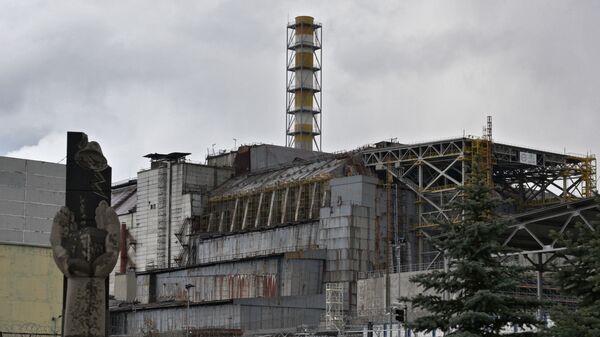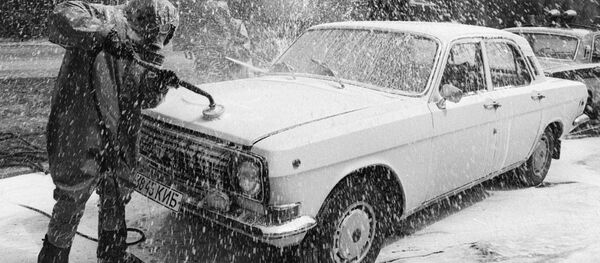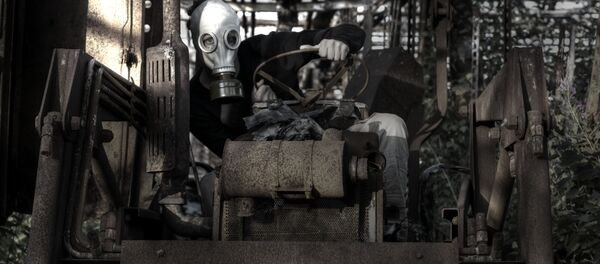スプートニク日本
チェルノブイリ原発事故から間もない5月初旬、現場で作業していた専門家が、爆発した4号炉の反応部分が溶け続けていたことを発見した。炉心には185トンの核燃料が含まれ、核反応は継続していた。この致命的な質量の下には、冷却材として機能していた500万ガロンの水を貯めたタンクがあった。溶融する原子炉の炉心と水を唯一隔てていたのは、厚いコンクリート壁だった。核燃料が水に接触すれば、放射能汚染水による大規模な水蒸気爆発が起きていただろう。これと比べれば、実際に起きた爆発は、些末な出来事になっていただろう。
早急に水を抜く必要があった。だがそのためには、タンクの隣の部屋にある遮断弁を開かなくてはならなかった。問題解決のため、発電所を知り尽くしている3人の職員が呼ばれた。シフト長のボリス・バラノフ氏、タービン・原子炉部門のシニアエンジニア、ワレリー・ベスパロフ氏、そしてアレクセイ・アナネンコ氏だ。ゆっくりと溶けゆく4号炉の下にあるタンクほど最悪の場所はその瞬間、地球に存在しなかっただろう。

Вид на новый безопасный конфайнмент (НБК) и саркофаг на 4-м энергоблоке Чернобыльской атомной электростанции (ЧАЭС) из города Припять.
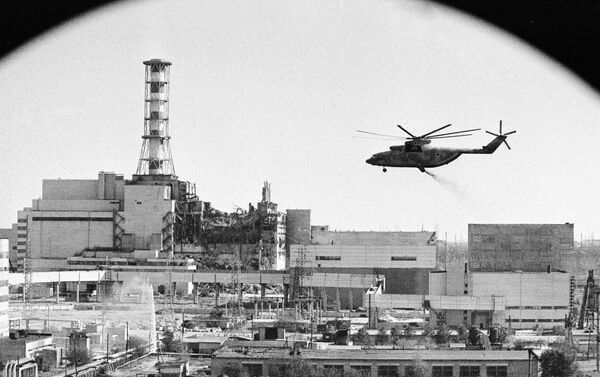
2/4
© Sputnik / Igor Kostin
Вертолеты ведут дезактивацию зданий Чернобыльской атомной электростанции после аварии.

3/4
© AP Photo / Efrem Lukatsky
This Friday, Oct. 13, 1991 file picture shows part of the collapsed roof at the Chernobyl, Ukraine nuclear power plant during a media tour of the facility. The idea of smothering and sealing Japan's overheated nuclear reactors in sand or concrete to stop the crisis is appealing. But experts say that it's too early for something that desperate and that it could be a big mistake that could make matters worse. Alex Sich, a nuclear engineer at Franciscan University in Ohio, who has lived in Chernobyl and published research on the disaster there, noted that Russian authorities dumped some 5,000 tons of sand, clay and other materials from helicopters in an attempt to smother that dangerous reactor. But the Japanese situation is different, he said.
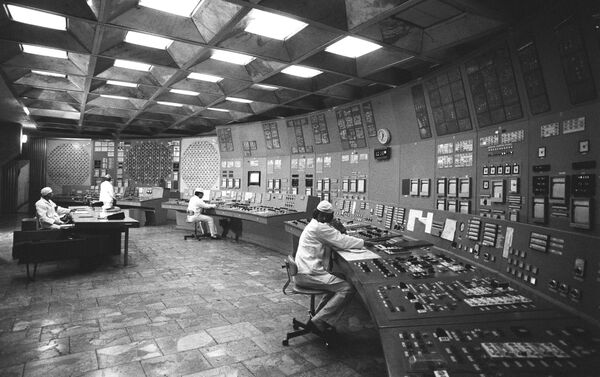
Central nuclear de Chernóbil, 1985
Вид на новый безопасный конфайнмент (НБК) и саркофаг на 4-м энергоблоке Чернобыльской атомной электростанции (ЧАЭС) из города Припять.
2/4
© Sputnik / Igor Kostin
Вертолеты ведут дезактивацию зданий Чернобыльской атомной электростанции после аварии.
3/4
© AP Photo / Efrem Lukatsky
This Friday, Oct. 13, 1991 file picture shows part of the collapsed roof at the Chernobyl, Ukraine nuclear power plant during a media tour of the facility. The idea of smothering and sealing Japan's overheated nuclear reactors in sand or concrete to stop the crisis is appealing. But experts say that it's too early for something that desperate and that it could be a big mistake that could make matters worse. Alex Sich, a nuclear engineer at Franciscan University in Ohio, who has lived in Chernobyl and published research on the disaster there, noted that Russian authorities dumped some 5,000 tons of sand, clay and other materials from helicopters in an attempt to smother that dangerous reactor. But the Japanese situation is different, he said.
Central nuclear de Chernóbil, 1985
翌日、防護服に身を包んだ3人がタンクへと降り立った。現場は暗く、彼らは防水ライトの光で場所を把握した。ゲートバルブがついに見つかり、開放された瞬間、水は流れ出て、プールは勢い良く空になり始めた。溶融する放射性物質がタンクに到達した時点までには、水は無くなっていた。2度めの爆発は回避できた。
3人の男性が上方に戻ると、原発職員らは英雄として出迎えた。だが彼らの名前や作戦自体は、長年にわたり機密情報だった。彼らはすでに存命ではないと報道されたのも驚きではない。実際、ボリス・バラノフ氏は2005年、心不全で亡くなった。ワレリー・ベスパロフ氏は2008年まで原発で勤務し、その後、年金生活に入った。アレクセイ・アナネンコ氏は今、公共団体「ウクライナ核フォーラム」の指導部で活躍している。
ちょうど1年前、アレクセイ・アナネンコ氏、ワレリー・ベスパロフ氏、故ボリス・バラノフ氏に、勇敢勲章が叙勲された。
